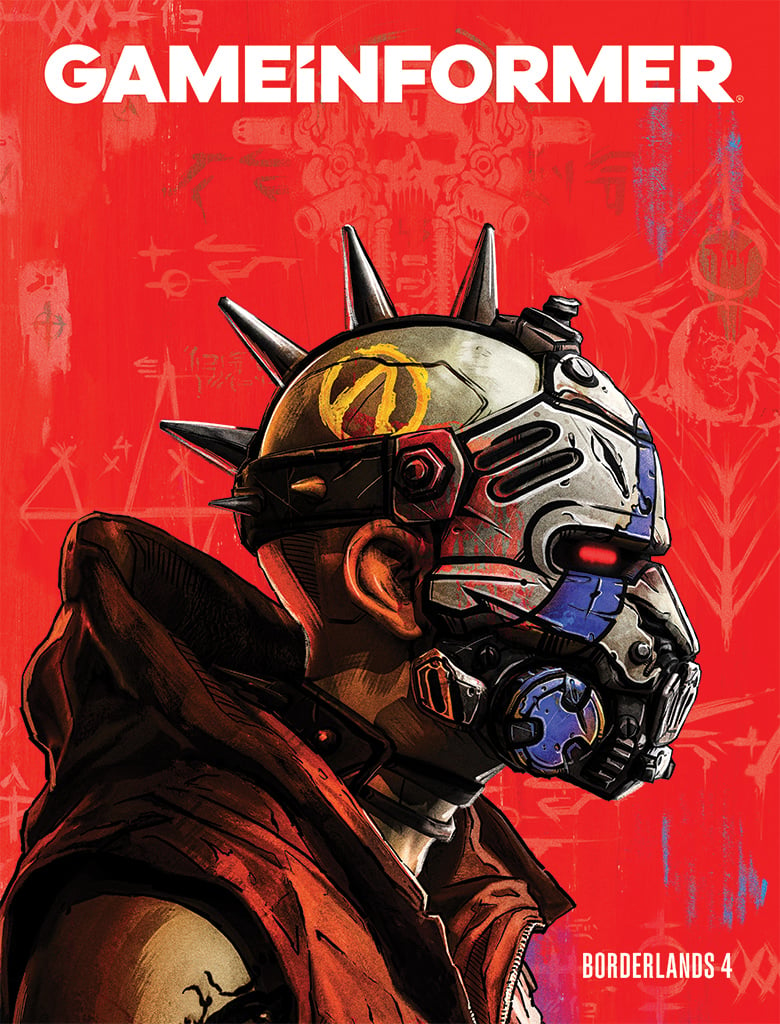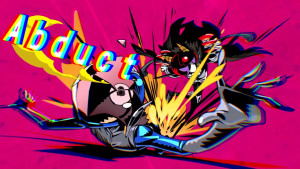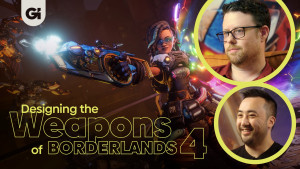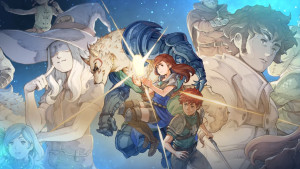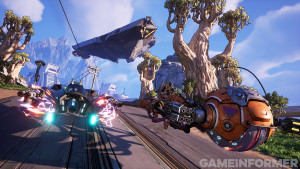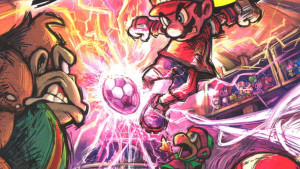Last chance to get your Borderlands 4 issue when ordered by July 1st. Subscribe Now!
Pokémon Go Team Discusses Successes, Challenges, And The Future

Pokémon Go released last week, and the game is already huge, jumping to the top of iPhone and Android app charts and forcing people out of their homes to catch Pokémon. We spoke with John Hanke, the founder of Niantic, the developer that took Nintendo and The Pokémon Company's hugely popular monster-catching franchise and ran with it. Hanke and Niantic developed Ingress, a predecessor to Pokémon Go that tested the waters for many of its geocaching gameplay mechanics.We asked Hanke how it feels to be behind the phenomenon, what's in store for the game's future, and how involved Pokémon's creators have been in the development process.

Game Informer: Can you give me a little bit of your background, John? You worked on early MMOs, and now you’re doing this strange thing with Pokémon. Can you tell me a little bit about that path?
John Hanke: My gaming resume, other than playing games, starts back in 1994 when we founded a company called Archetype Interactive that made a game called Meridian 59. Which is one of the first internet 3D MMOs, I think it was the first. We started it as an independent company, we were acquired by 3DO. Look that one up in Wikipedia – Trip Hawkins’ failed console game company-turned game publisher. But yeah, we brought that game to market, and I was there. We ran it for a couple years, and then I rolled of to do another company. I had a chance to soak in the early days of MMOs and some of the first online guilds that got formed and watching the whole social dynamic of that type of game emerge in the early days. That experience was definitely at the front of my mind whenever the concept for Ingress was being created. It was really very simply to take that MMO experience and hopefully the social-team cooperative gameplay element to that and bring it out into the real world.
How did Pokémon Go come about? Did The Pokémon Company come to you? Or did you bring a pitch to them and show them Ingress as a possible template?
Yeah, we went out and talked to them. So, we launched Ingress in 2012 – November 2012. Yeah, we’re growing that product and seeing it be a hit worldwide. And then in 2014 – I believe if that’s the right date – that year just keeps getting mixed up in my head, Google and The Pokémon Company did an April Fool’s joke around Google Maps, where Pokémon spontaneously appeared in Google Maps, which ended up being tremendously successful; it went viral. There’s a video about it that got umpteen million views. And so, within the Niantic team, we were thinking about, we built the game, it’s our intent to build a platform, what would be the next step towards growing the platform? And Pokémon was the idea that seemed incredibly obvious to us, given just the structure of the game, given the fact that it’s about chasing Pokémon and capturing Pokémon out in the real world seemed to be super natural to just substitute a mobile phone for the Pokémon and Pokédex. So we actually surfaced the idea with The Pokémon Company, there was interest, they were actually playing Ingress, and Mr. Ishihara, the CEO of the Pokémon company – I met him maybe a month later, and he was like a level 11 Ingress player, so he compulsively played. And his wife was a – and I guess they are still playing – his wife was a high-level Ingress agent as well. So, they’ve been playing together, then a lot of people in The Pokémon Company were Ingress players, so when we pitched this idea of a Pokémon-like game built on the concept that we’d built with Ingress it was very well-received. I mean, we both brought ideas, being the very obvious thing. And yeah, we started the project, and here we are.
And how involved were they during development? It sounds like they were Ingress fans, did they just trust you or were they checking in a lot? And did they have a lot of feedback?
You know, they stayed pretty involved. Junichi Masuda – he’s the producer on the new Pokémon game, he was a programmer going back to the very first Pokémon game – so he’s kind of their go-to guy for canon and the Pokémon universe. So, he has been an invaluable asset for us, he’s been involved in playtesting all the way through, and giving us lots of feedback and helping us shape an experience that's true to the Pokémon world. I mean, it’s a great brand, it’s been around for 20 years. So, I would say that they've been very attentive and very involved with what we’re doing. They want to protect it and protect the brand. They perceive Go as a really wonderful evolution of the Pokémon universe.
I was surprised at E3 when showing Pokémon Go, that Miyamoto was on-stage, clearly excited about the game. As an outsider, I assumed he wouldn't be involved in Pokémon Go. Have you talked to Miyamoto? Have you gotten feedback from him, especially following the launch?
Well, I haven’t talked to Miyamoto-san post-launch, but certainly we’ve been in touch with Nintendo and Miyamoto. He was on-stage with us when we announced the project, it had been under development for some time, but he was onstage when we publicly announced it in Japan back in September of last year. So, it’s definitely something that he’s been aware of and has provided his perspective on.
He’s been giving feedback through the course of development? It seems like something he’s excited about. Would you say that’s true?
I don’t want speak for Mr. Miyamoto. I have a huge amount of respect for him, so I don't want to put words in his mouth. I hope he likes our game. He is aware of it and we have gotten feedback from him. At the same time, he’s not been involved as a producer or game designer, he’s not been hands-on in that way. I was very, very honored to be on stage with him whenever we did our initial announcement and had the opportunity to hang out with him, talk about games, and bluegrass music. It turns out he’s a big bluegrass music fan. He plays the banjo. Very interesting guy.
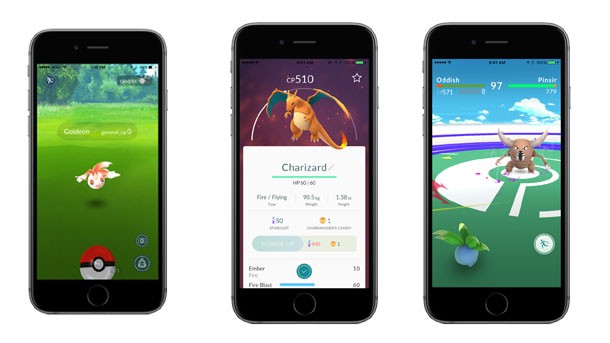
The game’s out now. The servers are having a hard time under the weight of so many users. I’m curious about your expectations of the game. Now that’s it’s out, is it about the level that you guys expected it to be or is it already exceeding expectations in terms of downloads and people talking about it online and all that?
Yeah, I mean, we hoped that the game would be successful and we had ambitious goals for it. But it definitely exceeded our expectations in every way. I mean, hitting that number one in the free apps and top-grossing apps yesterday was unexpected for us on day one with a partially launched product. So yeah it’s been amazing. More impressive than the charts and the raw numbers have been the social activity, engagement, all the user stories that are flooding Reddit and flooding online social platforms – great stories about groups of people going on giant organized Pokémon walk in Sydney, I heard something like that’s getting organized in Los Angeles, I saw photos this morning of big groups of people that had congregated around gyms last night just sort of spontaneously. So that part of it is super exciting to us because our whole thing, the whole mission for Ingress is to get people out of the house and encourage people to exercise and get out of the living room and go out into the neighborhood, those are the most exciting images for us. People getting out, going to new places, and making new friends, and socializing, playing with their existing friends out in the real world, that’s awesome to see.
How are PokéStops and gyms established and selected? How does that work on the development side?
Well, PokéStops and gyms are the results of three years worth of work at Ingress. Ingress is also a game based around locations. Ingress is a sci-fi game, the locations are puzzles in Ingress, players can control portals to power them up, to link them together, to form fields, or two teams. These portals – when we started that project with with Google – we seeded that database of global locations, with historical markers, and a database of public artwork, and statues. There were a few hundred thousand of them, it was enough to get the very early data of the game started, and then we encouraged of user within the game to submit places that they thought should be portals within their neighborhoods where they were playing Ingress. And we gave them... you could earn a medal for that, you could earn badges for submissions of portals. And we established some guidelines: It should be safe and publicly accessible; it should be a work of art, important piece of architecture, or unique local business; and then we had a group of operations personnel that reviewed those submissions and approved the ones that seemed to meet our criteria. Those had then been edited and revised over the past several years, new submissions throughout that time period, but also people correcting the location, adding names and descriptions, and deleting things that weren't good portals. It’s not perfect, but it’s become a pretty good, a pretty mature, global data set of these public visible, visually identifiable locations. So we used that, and select a subset of that for the gyms and PokéStops.
And are you guys planning on opening those doors for Pokémon? We really want to make our office a gym.
We are actively working on a way to re-enable submissions of portals within Ingress. Whether or not we extend that within the Pokémon Go app or not, I don’t know at this point. But we actually shut down the submissions about six months ago or around the time we spun our, certainly before then. Because we just had so many submissions worldwide and it was a huge burden to process them. We felt like we needed to put that on pause and we’ve been working a crowd-sourced, user-voting solution so that we can re-enable submissions and with the help of users process new ones. But, no definitive timeline on that, it’s just something we are working on, though.
For more from Hanke about the game's lack of a tutorial, why so many churches are PokéStops, and how often the game will be updated, head to page two.

It’s kind of hard to tell how exactly things work. For example, the ring that forms around the Pokémon when you throw the Pokéball – there's not indication for when the best time is to throw the Pokéball. Did you intentionally make it obtuse in order to drive the community to figure the game out?
I can’t say that we were that clever, no. We tried to create UI that people could figure out, but if it’s so obtuse, you for example were having trouble figuring out what it’s supposed to do, then that’s just a failure on our part. We got a lot of feedback during the beta, we made a lot of improvements, we fixed a lot of bugs, but I would put it into that category of something we’d love to make that more so that it’s more obvious.
The basics I haven’t had a problem with, I guess it’s just those higher-level things that I’m sort of struggling to figure out what are the best practices and that kind of thing.
Yeah, yeah. Well, we’ll try to make it better. We’ll try to make it more clear.
A lot of the PokéStops are churches. Is that just a product of the submission process during Ingress?
It is, yeah. They’re all submitted by users and the requirements that they’re notable in some way and they’re publicly accessible places, so yeah, I am aware that there are a number of churches, religious temples, and buildings of various denominations worldwide that are in the game.
Is there a fear, for example, that churches or other businesses that have been marked as PokéStops will request that they no longer be Pokéstops? How will you react to that?
Well, from time to time we get a request from a business or an institution to not be a portal or a PokéStop. We gotten a few of those during the beta. We honor that if that request is made.
Can you talk about the roadmap for the future? Can you talk about what’s in store for the near-future and long-term?
I can say a few things about that. In terms of there being a silver or a ruby red, or whatever, our current focus is just on enhancing and improving Pokémon Go. It is an MMO, so it is something we’re committed to regular updates and that. There will be new clients and server iterations pushed bi-weekly.
Bi-weekly updates?
Treat that as a general rule of thumb. That’s more or less the tempo that we’re on, but hopefully we won’t start the war drums beating for an extra piece. My point is more that, it’s one where – and we’ve done this with Ingress for the past three years – we regularly push updates. Sometimes they’re small features, sometimes they’re big features that get rolled out. But we treat it as an ever-evolving game. It’s not something that just sort of minted and then issued on launch day and not changed. So, in the area of things that we are interested in continuing to, well, there’s a wide variety of things that we want to do in the game, things on our roadmap, but in the near term, trading is something that’s not in the game right now that we’re committed to adding to the game. So that will be I think fairly soon in the future. We’re also looking at PokéStops and gyms and we have a set of ideas around how to add depth to that gameplay in terms of, you can add things like a lure to a PokéStop today that sort of modifies the PokéStop and causes it to attract more Pokémon it.
There is some thinking about how to further modify and evolve PokéStops and gyms. Players will be able to shape them and add functionality to them by working collaboratively together, so that’s an area that we’ll be spending quite a bit of effort over the coming weeks and months on. The sort of overall structure of the game is the early stages and the initial experience is about discovering and capturing, there are then, you know, you interact with PokéStops and then as you gain more experience, you reach level five, you can engage in gym battles. It’s evolving that competitive, cooperative team-play that there’s a lot more that we want to do with that. We’ll be focusing on that. It’s more just general improvements and bug fixes.
What are the short-term plans for the servers?
Yeah. Short term plan is to keep the servers up and to launch in the rest of the countries that we 're not in yet.
Do you have any tips or best practices for playing well?
Tips for playing well? Well, make it a habit. Make it something you do every day. The game is really designed to be something that can be woven into your daily life, so a trip to work, a trip to school, a regular time you have waiting on the bus or a lunch break walk to go out and get some fresh air; it’s really meant to be something that you can fit into those bits of your day where maybe you want to step outside and take a break. Certainly people go on binges and play for hours at a time, but I think it’s best enjoyed if it’s something that you just do on a regular basis and just kind of make a habit of getting outside and wandering a little bit more widely in your neighborhood.
Do you feel good about the launch right now?
I feel very happy. We want to get the servers stabilized and launch to the rest of the countries, but I’m delighted and just overwhelmed with the response. It’s gratifying to see after so many long months of work. It’s a great payoff to see people enjoying the product.
